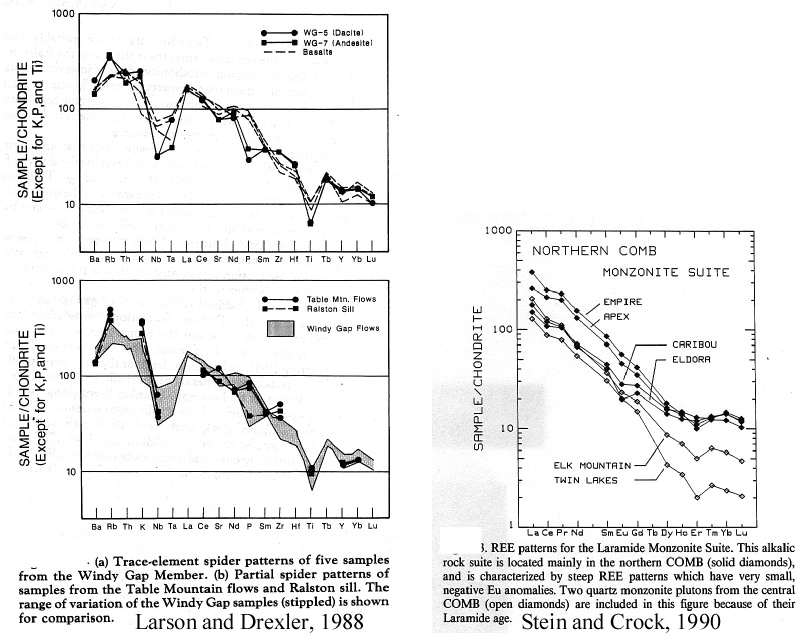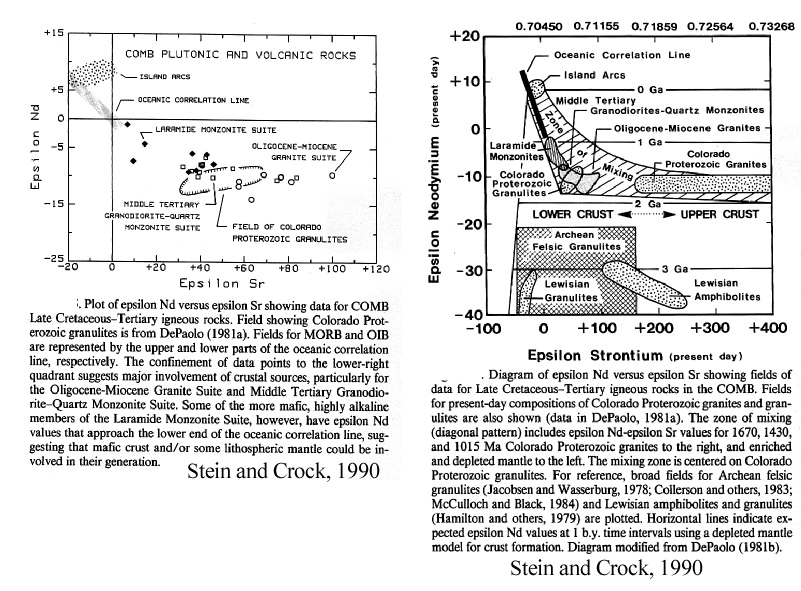
Colorado Mineral Belt
The Rocks and their Geochemistry, et cetera
Both alkaline and calc-alkaline (Eric Cannon) igneous rocks occur within the CMB. Alkaline igneous rocks are generally associated with mantle melts, while calc-alkalic igneous bodies in the CMB are thought to have resulted from melting of the lower crust by hot alkaline melts (Larson and Drexler, 1988). Most geochemical studies conclude that contributions from a subducting slab are not necessary to produce the geochemical signatures found in the Laramide CMB igneous rocks. However, for the most part, the absence of a slab is not argued to be necessary, either.
Larson and Drexler studied clasts of Laramide volcanic rocks on the eastern side of the Front Range which display rare earth element data (see figure below) as well as initial Sr values (0.704-0.705) that the authors argue suggest a mantle origin may be possible for these rocks. However, similar REE concentrations are found in arc-type settings, above subducting slabs. Larson and Drexler (1988) suggest that the enrichment in incompatible elements results from metasomatism in the mantle, and the fact that there are two suites (alkaline and calc-alkaline) of igneous rocks suggests melting in two different environments.
Stein and Crock (1990) argued that Laramide age alkaline igneous rocks within the CMB have Rare Earth Element (REE) concentrations typical of alkalic rocks worldwide and are consistent with a lower crustal origin for the melts that produced them. Epsilon Nd values (-1.0 to Š9.3) combined with the REE data suggest melting of a metasomatized (K, Na, and LREE-enriched) mafic crust with the possibility of a mantle component as well. Stein and CrockÕs eNd vs. eSr plots reveal potential endmembers for mixed melts. Some potential sources for the enrichment of the mafic lower crust include but are not limited to mantle degassing and lower ocean slab devolitization during the Laramide (Stein and Crock, 1990). Stein and Crock (1990) argue that ponding of enriched mantle beneath the lower crust or melting of the lower mafic crust alone could be responsible for producing the Laramide melts without the need for a subducted slab.


<- Back to The Debate | Home | References | On to Summary ->